Fans of 2D Metroidvanias are absolutely swimming in options right now as a flood of high-quality new releases has recently inundated the market. After La-Mulana 2 and Dead Cells offered insanely fun takes on the old-school Metroidvania style, we’ve now got the hyper stylish Death’s Gambit as well.
So what sets this one apart?
Death’s Gambit splits the difference between the SNES platformer style and the Souls-like phenomona. It pulls from both sides of the aisle and offers something in between that will appeal to a wider audience than either one alone.
Two Halves Of A Grim Whole
Right from the start, there are areas of this game that will trigger fond memories of classics like Symphony Of The Night. From finding secret nooks and crannies to regularly conversing with Death himself, there’s a definite Alucard feel to much of the game. The same goes for the game’s streamlined stats and inventory management, which is less extensive than a full fledged RPG but a good fit for a 2D platformer with light RPG elements.
As you progress, you’ll quickly notice there are a handful of attack combos to figure out, many of which use different weapons, keeping things fresh and interesting from the get go. There’s also plenty of platforming built into the game’s level design and puzzles. Sme of these are straightforward, while some, for example, use the landscape to help you avoid boss super attacks.
One area in the early part of the game in particular has a fun segment where a phoenix constantly rushes by and sets the area on fire (Dark Souls, anyone?). You have to use objects (or enemies) to your advantage to keep from getting cooked. It’s not only a great gameplay example, but also a fantastic example of Death’s Gambit expertly meshing the background art style into the gameplay.
However, it’s not too long before Death’s Gambit starts to move away from the classics. Here, you can essentially pick your own play style. Whether you go with scythe, greatsword, magic tome, or axe, weapons have their own abilities not directly tied to your talent load out. You can change your play style not just by trying different classes in a second playthrough, but simply by using a different weapon type and picking different skills.
There’s also a big give and take between skill-point selection, picking the best class talent to gain soul power, and deciding whether you want to use feathers for a damage boost or keep them in your inventory for healing. For such a simplistic game, there’s a surprising level of strategy and character-building options here. I had a ton of fun in many areas just trying out different ways to tackle the same challenges.
More than just numbers to boost health or damage, selecting the right stats when leveling up can also change the dynamic of the game. For instance, do you want more Stamina so you can dodge and roll away from long attack animations, or do you want more Finesse to utilize better equipment? The choices are seemingly endless.
The Castlevania-style platformer/RPG mashup is just one half of Death’s Gambit whole, though.The other half ramps up the difficulty while changing the focus of the game’s combat mechanics. You can’t just button mash and expect to make it through a screen, as that’s a sure way to meet a grisly end.
Everything from menu design to the way you learn backstory through item descriptions all ooze a strong atmosphere from a certain game I don’t even need to name. Stamina management? Check. Learning specific attack patterns for each enemy? Check. Dying a lot? Oh yeah, check. Going to a “bonfire” (in this case a statue) to spend “souls” (in this case shards)? Double check.
In this case, though, dying is built into the story a bit more cohesively, as Death himself is a character who doesn’t want you to meet your final end just yet. Turns out, he needs you to help him, which is a good thing since you’re being roasted alive when he appears and offers his contract. In fact, Death is also the means by which you learn backstory about the main character. Storytelling is handled through flashbacks appearing after certain numbers of deaths, so the game actually wants you to die from time to time.
This little tidbit is worked into the game constantly, such as the very nice touch of coming across a pile of your dead, former incarnations in a corner. Apparently, they all had pretty back luck in that particular puzzle room.
Ready For A Real Challenge?
While the basic Souls-like elements are all there, the combat on your first playthrough isn’t nearly as hard as with Dark Souls, Nioh, or The Surge.
That worked out well for me, as I was actually able to figure out the attack patterns and the puzzles without giving up in frustration early on. If insane difficulty is a feature and not a bug for you, though, there are a handful of twists here that can provide that extra level of challenge that masochistic players desire.
Gold chests filled with extra goodies only unlock if you didn’t use a healing feather in that area. Sure, you might be good enough to beat a section, but can you beat it without ever getting hit and regaining any health?
You can turn on perma-death by cancelling death’s contract… at any time. You want a serious rogue-like element added in to make your Souls-like even more absurd? That’s the way to go about it.
Finally, there are heroic versions of bosses that appear after you beat them the first time. These are truly insane renditions of the basic boss fights that will strain your skills (and your sanity).
So, while the main game is quite short, taking on these extra challenges adds in some replayability and extends the time you can expect to spend exploring the world of Death’s Gambit.
Deathly Aesthetics
Although it might feel like a cross between Castlevania and Dark Souls on the gameplay front, the story and world building are totally different beasts with Death’s Gambit.
A clear dark anime tone, along the lines of Berserk, pervades the game, with hardened soldiers getting horribly killed in huge numbers by monstrous beasts. This isn’t a constant grimdark bummer, though, and there’s even some humor here and there, like with a tiny lizard companion who likes to brew up some strange beer.
All of these characters and storylines are presented in a side-scrolling pixel format, and it fits the nostalgic tone. When a developer makes the choice to go old-school 2D in this day and age, they’ve got to absolutely nail it, and for the most part, that’s what happened here.
The pixel graphics are very satisfying overall, although a few of the larger boss enemies like the Owlking and Soul Of The Phoenix look sort of wonky and don’t perfectly mesh with the backgrounds. On top of that, the character design often made me think of Demon’s Crest, with hybrid animal-creature NPCs and knights in huge armor. Death’s Gambit is definitely striving to achieve a retro feel that doesn’t skimp on the dark fantasy elements.
In terms of map layout, the areas aren’t huge, but they are varied. Lava, deep forest, crumbling cities, and more will all feature prominently in your journey across the land. These varied landscapes make the overworld feel all the larger, even if it is only somewhat superficial to feel that way.
On the audio side, Death’s Gambit has an absolutely beautiful soundtrack. In may ways, it’s like a more varied version of I Am Setsuna’s music, just with additional instruments. Top-notch voice acting for many of the characters tops it all off, tying everything together into a nice cohesive whole.
As an old-school game, there are, of course, some oddities on the controls front you’ll have to get used to, and some of these quirky controls feel like they need to be changed.
For instance, why do I have to hold the spacebar while moving on a ladder? That’s pretty awkward on a keyboard. With how often you have to mash the shift key while moving to dodge roll, my computer also kept switching back to the desktop and asking me if I wanted to turn on Sticky Keys.
Strangely, there’s also no ability to pause the game, and enemies will keep killing you while you pull up the item menu. Sure, that’s a staple in the Souls-like genre, but it’s something to note here.
The Bottom Line
On your first playthorugh, Death’s Gambit is fairly short, but bosses are plentiful and there are secrets galore to uncover.
Developer White Rabbit could certainly polish the controls a bit, and there are a handful of bugs that need to be quashed in an upcoming patch. In particular, my playthrough was marred by black lines flickering across the screen fairly often.
Although the game seems simple based off the art style and mechanics, there are actually loads of different elements to juggle, like upgrading items, carefully picking skills based on the number of shards harvested from enemies, deciding on a talent tree path, and so on.
The difficulty is satisfying, but not insane. Combat will get hectic in some areas with dodging falling spike platforms and rolling out of the way of scythe attacks, all while simultaneously jumping to avoid exploding bomb arrows.The tone and fantasy style of Dark Souls in a classic 2D Metroidvania layout? Yes please!
There’s also clear incentive to keep playing and find new encounters, as the game doesn’t hold your hand while puzzling out the story. The player has to piece things together as the game doesn’t assume they know what the main character knows.
In short, Death’s Gambit isn’t perfect, but it is damn good, and it meshes together two different genres with a lot of style and charm.
Hopefully, some patching will arrive soon to smooth over the rougher parts and keep the player base hooked until Bloodstained Ritual Of The Night shows up later this year.
You can buy Death’s Gambit on Steam for $19.99.
[Note: The developer provided the copy of Death’s Gambit used in this review.]

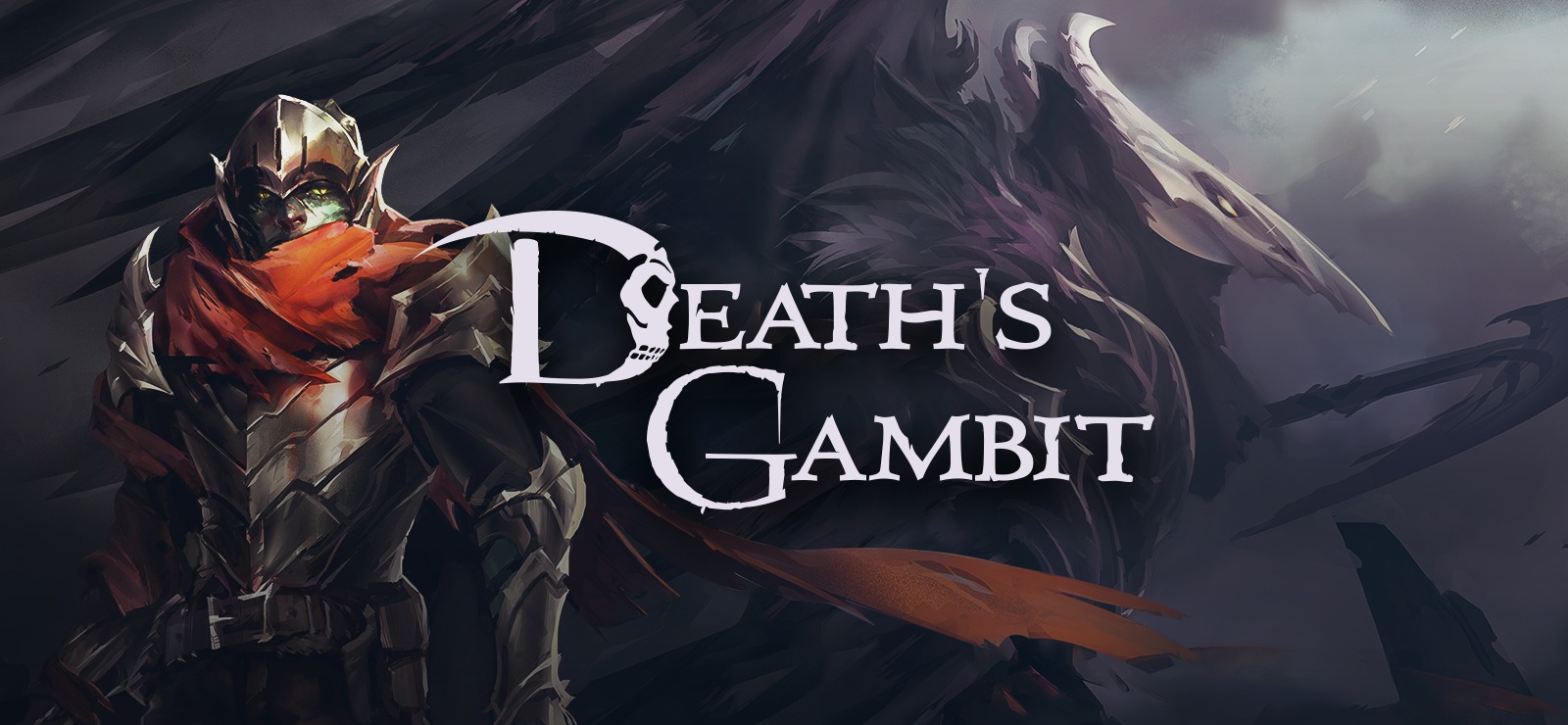
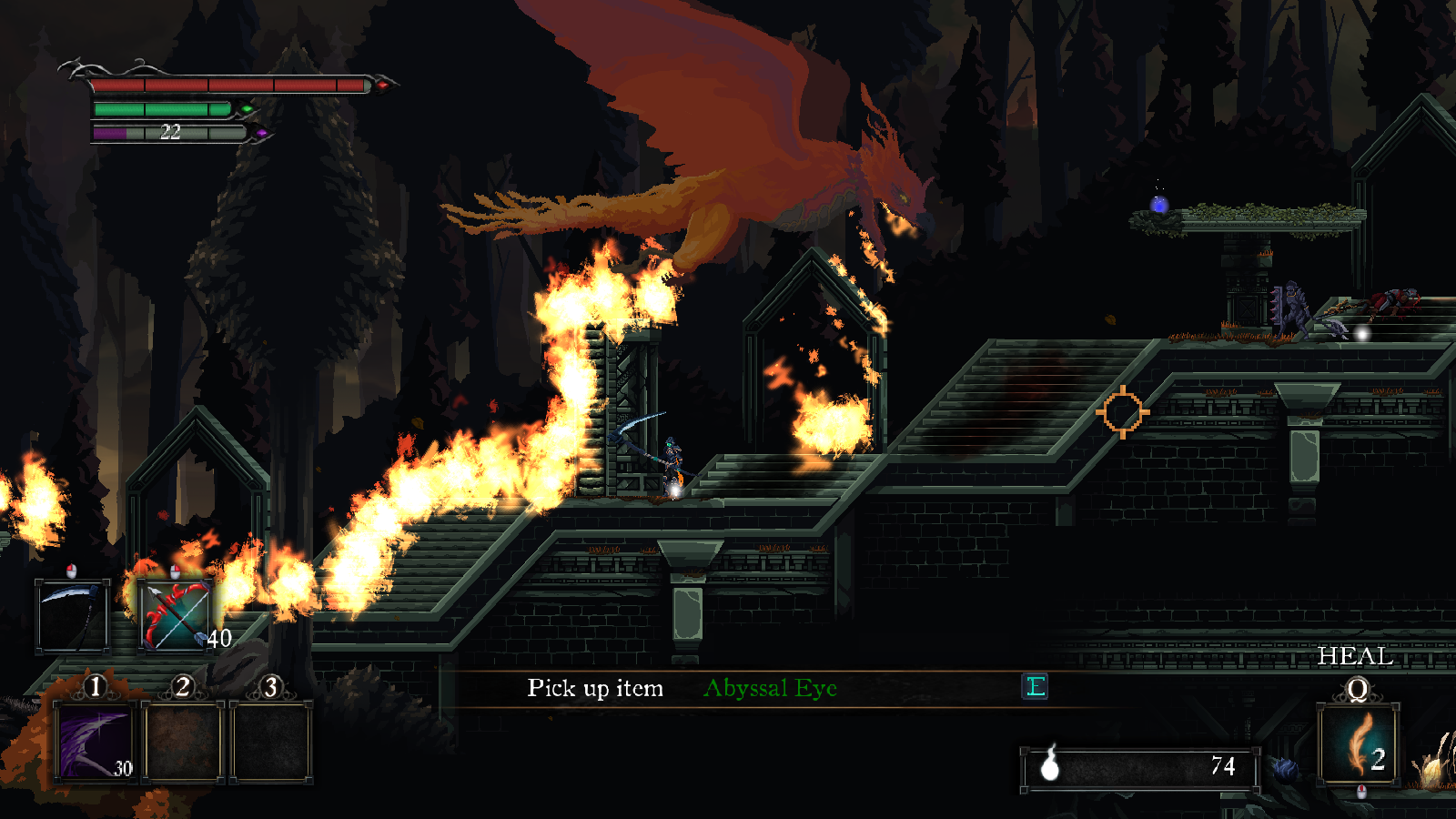
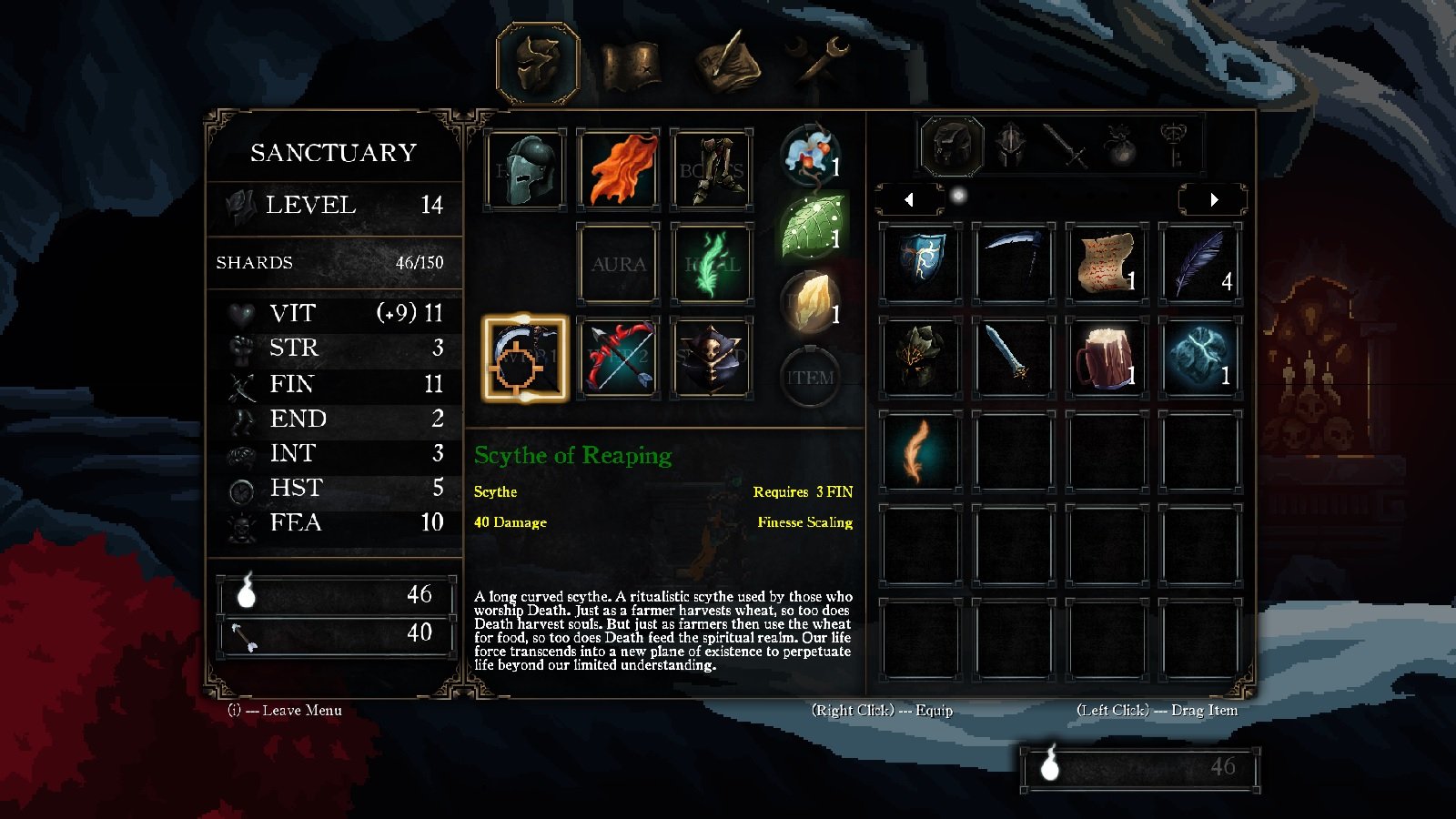
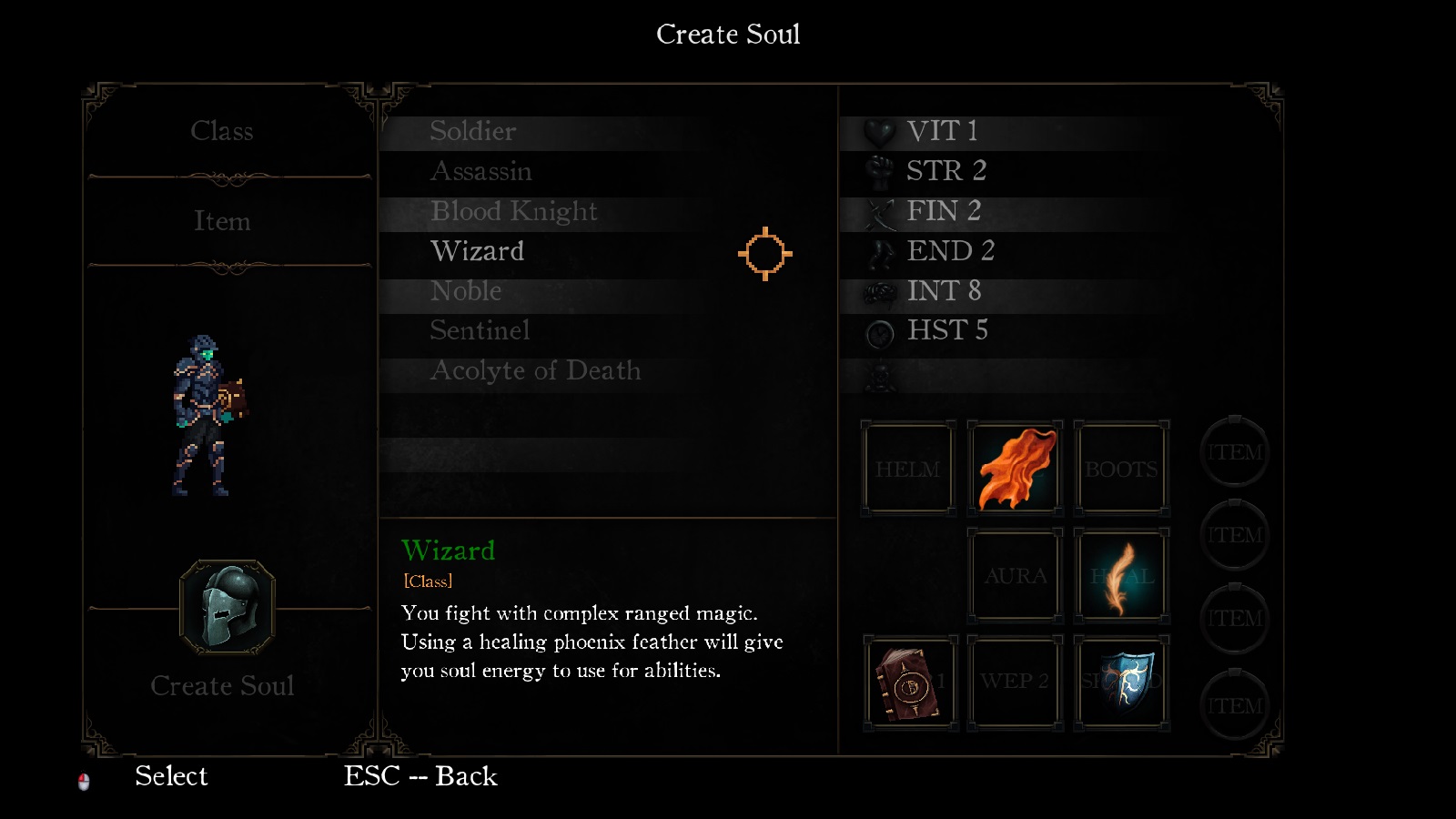
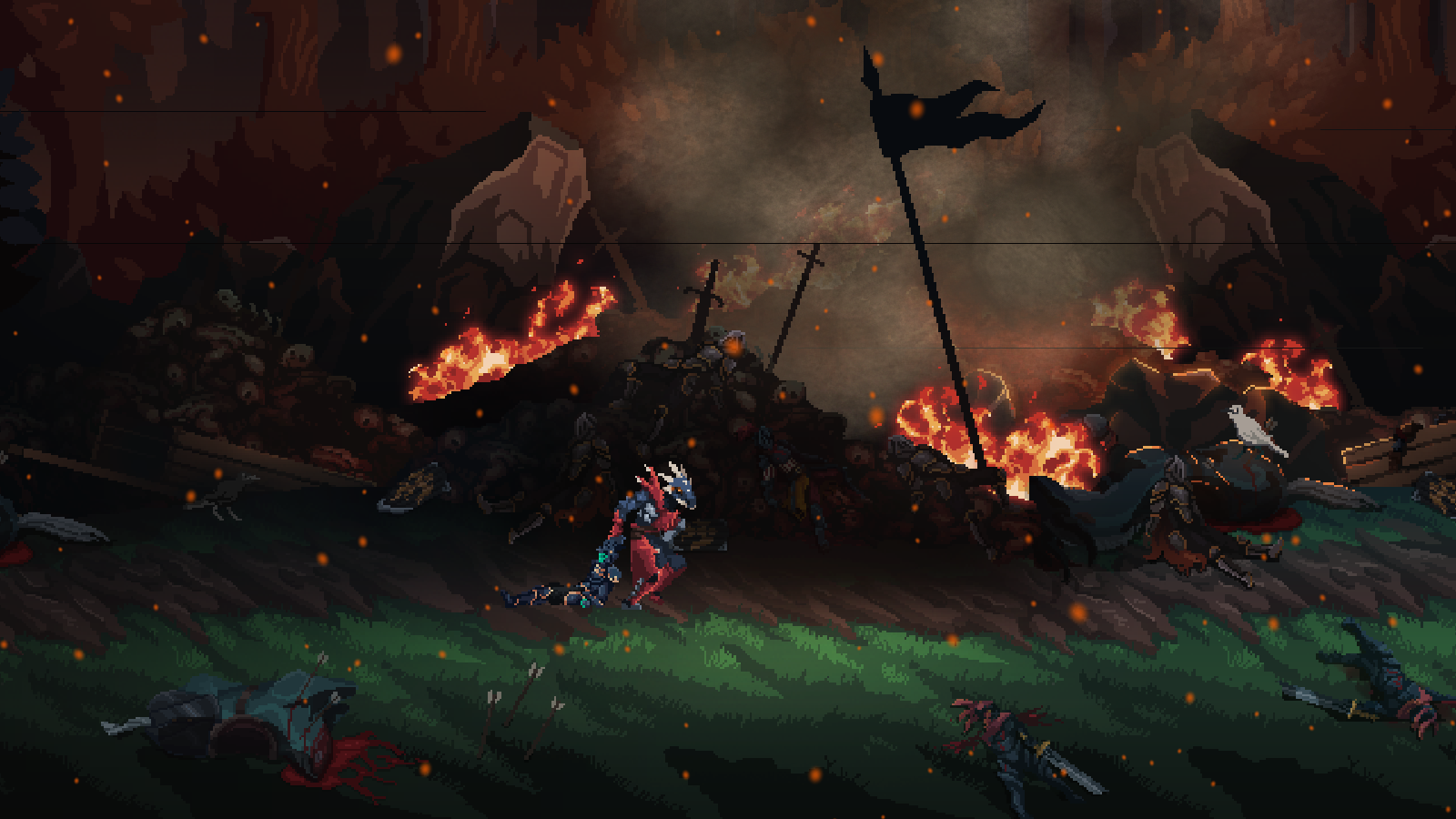
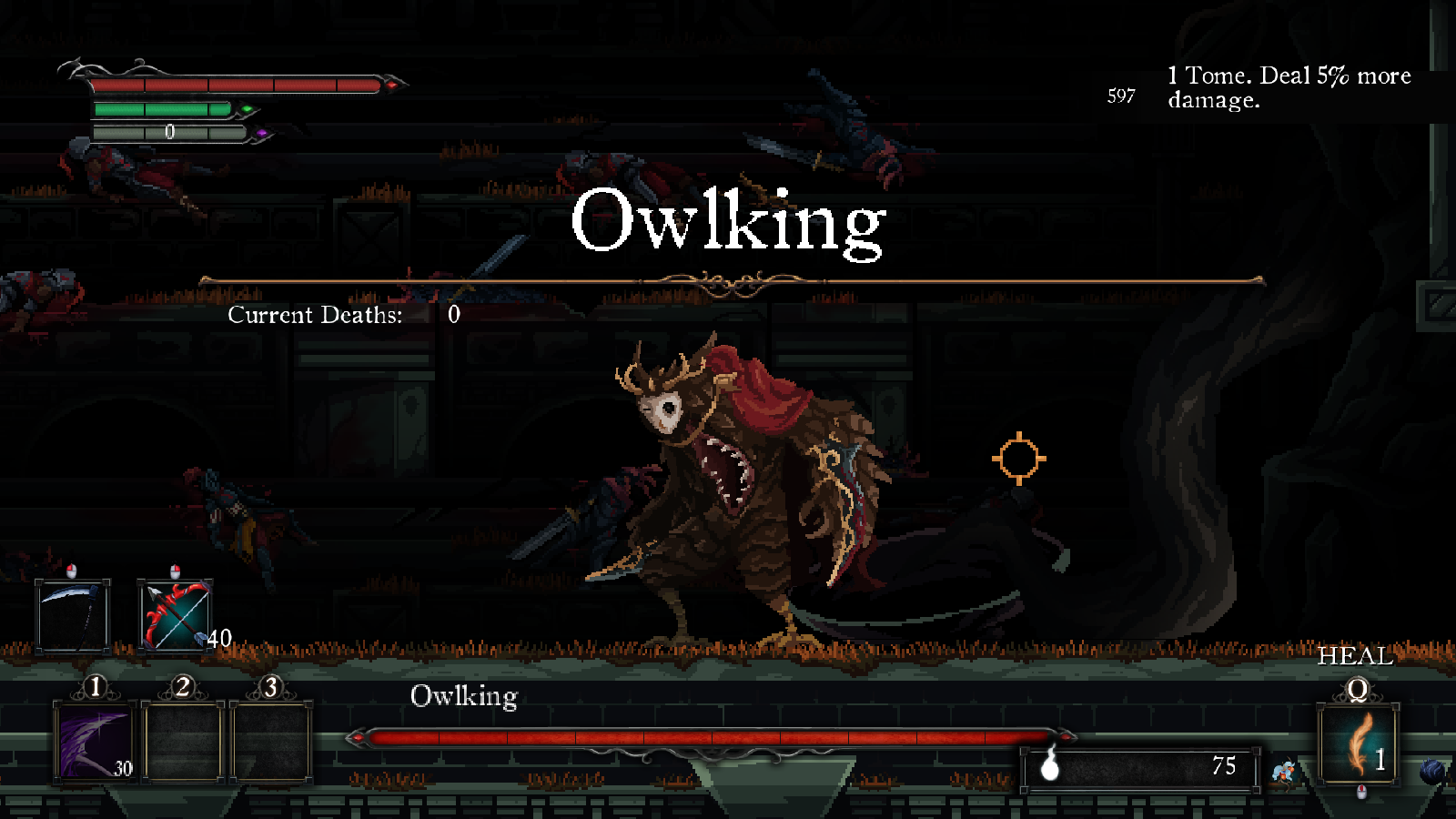








Published: Aug 16, 2018 12:37 pm